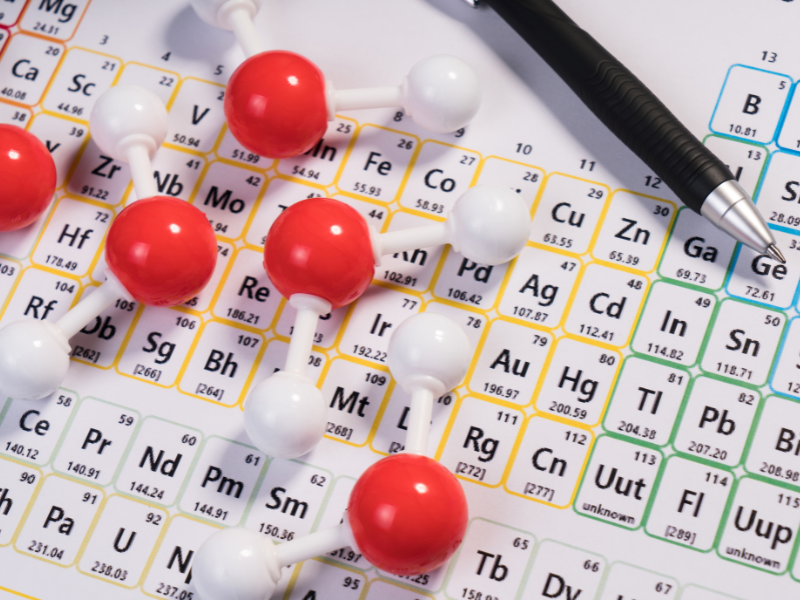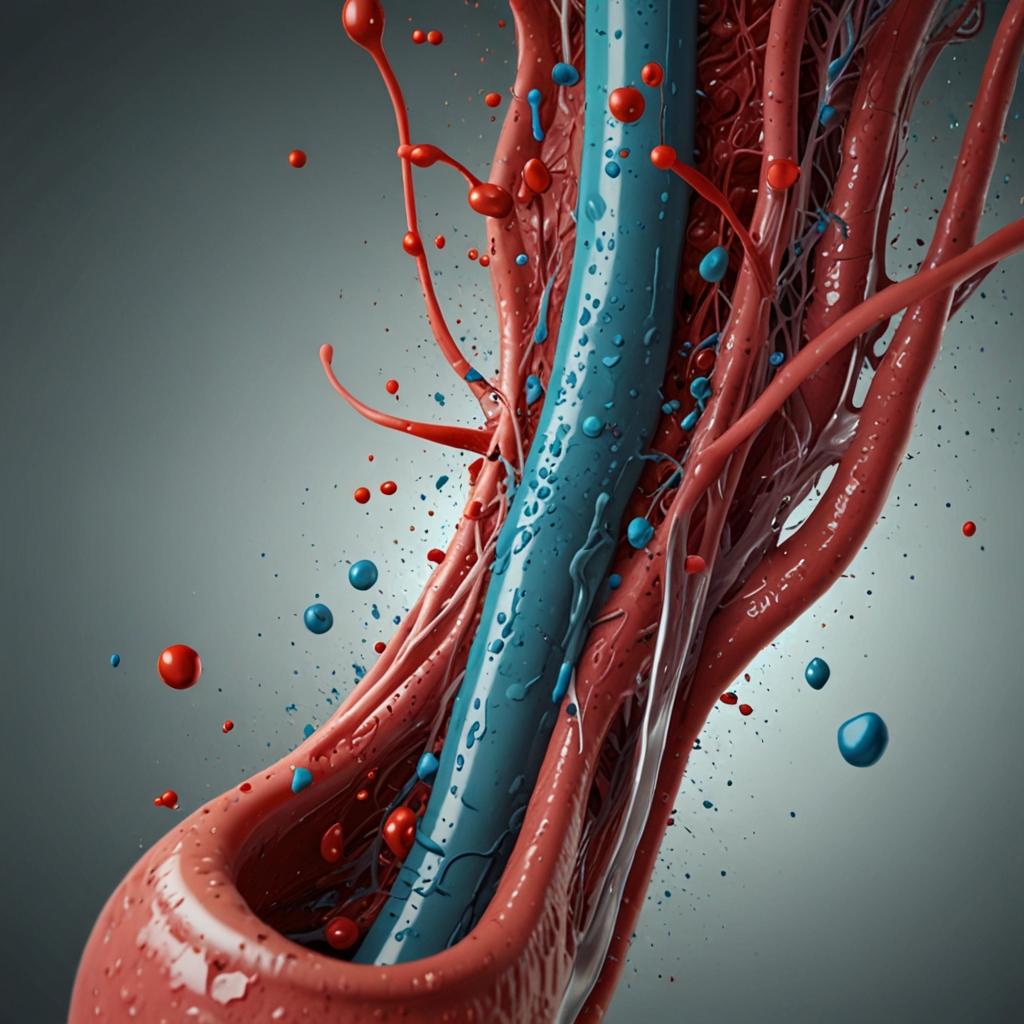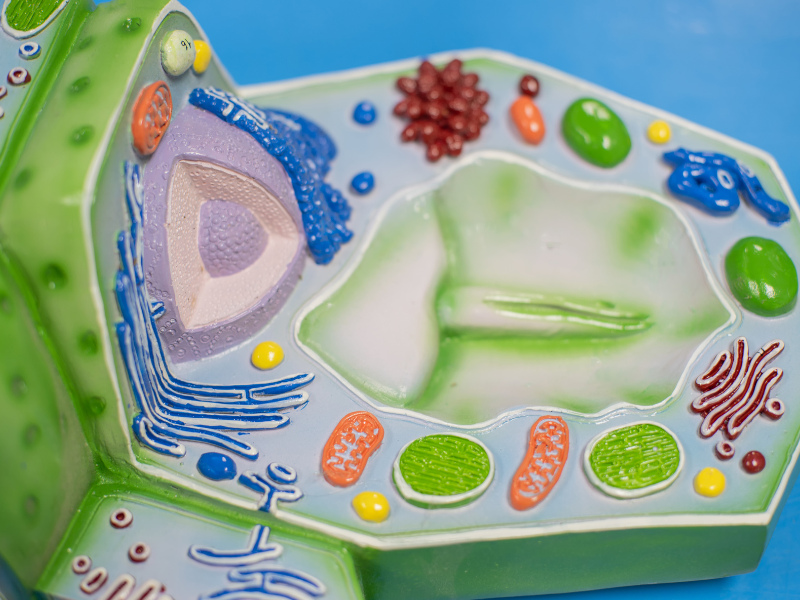7.1: Diet
7.1.1 Balanced Diet
A balanced diet contains all the food groups in necessary proportions. These necessary food groups are shown in the table below:
| Food Type | Function in the Body | Sources |
| Carbohydrates | Source of energy | Bread, cereal, rice, pasta, potatoes |
| Proteins | Growth and repair | Milk, soy, meat and fish, eggs, pulses, nuts |
| Fats | Insulation and energy store, part of cell membrane and make steroid hormones | Butter, oils, nuts |
| Vitamins | Needed in small amounts for maintaining health | Fruits and vegetables |
| Minerals | Needed in small amounts for maintaining health | Fruits, vegetables, meat, dairy products |
| Roughage (Dietary Fibre) | Provides bulk to food and allows the gut to push it (enables peristalsis) | Vegetables, fruits and whole grains |
| Water | Needed for chemical reactions to take place in cells and is present in most parts of the body | Water, juice, milk, fruits and vegetables, biproduct of respiration |
Some of the vitamins and minerals are shown below:
| Vitamins | |||
| Vitamin Name | Function | Sources | Deficiency |
| Vitamin C (water soluble) | Protects cells from ageing; forms an essential part of collagen protein which makes up skin, hair, lips, and bones; protects cells from ageing; has antioxidants to give electrons to free radicals so that wrinkles and mutations are prevented | Citric fruits and vegetables | Scurvy: production of fibres in the body is affected; lips may start to bleed |
| Vitamin D (fat soluble) | Helps the body to absorb calcium and so required for strong bones and teeth | Oily fish, eggs, liver, dairy products, also made naturally by the body in sunlight | Rickets: bones are soft and may bend; tooth decay |
| Mineral Salts | |||
| Mineral Name | Function | Sources | Deficiency |
| Iron | Needed to make haemoglobin which are present in RBC’s | Red meat, liver, some leafy vegetables such as spinach, metal utensils made of iron cause some iron to enter food | Anaemia: with a lack of iron, haemoglobin isn’t produced, which causes a shortage of oxygen travelling in the body (breathlessness and lack of energy in the body), eventually leading to death |
| Calcium | Needed for strong teeth and bones and involved in the clotting of blood and muscle contractions | Milk, cheese, eggs | Several problems:
|
7.1.2 Effects of Malnutrition
Malnutrition is caused by not eating a balanced diet. They include:
Starvation:
- Cause: taking in less energy than the energy being used over a long period of time
- Effects: body starts to break down energy stores – first fat and then muscle tissue, leading to severe weight loss and eventually damage to heart and immune system, increasing the risk of many diseases
Constipation:
- Cause: lack of fibre in the diet
- Effects: food lacks bulk for muscles to push it through the alimentary canal and so risk of diseases such as bowel cancer are increased
Coronary Heart Disease:
- Cause: too much saturated fats and cholesterol in the diet
- Effects: fat deposits build up in arteries supplying the heart, reducing flow of blood to the heart muscle cells which do not work properly due to lack of oxygen. Can lead to heart attacks and death
Obesity:
- Cause: taking in more energy than is used
- Effects: extra energy stored as fat, weight increases and contributes to development of many diseases such as heart disease and diabetes
Protein Energy Malnutrition: where a lack of food means malnutrition!
In many countries in the world, droughts, natural disasters, wars and a poor economy can lead to mass malnutrition in large areas of the country.
The two types of malnutrition most common in these situations are termed as protein energy malnutrition (PEM) and they are:
- Kwashiorkor – caused by a lack of protein in the diet, most common in children under 2 years of age.
Cause: Often caused by poverty as high protein foods tend to be more expensive and scarcer.
Effects: Children suffering from kwashiorkor are always underweight for their age but they often have a swollen abdomen as their diet may contain a lot of carbohydrate. - Marasmus – the most severe form of PEM.
Cause: Where there is a lack of both protein and energy in the diet.
Effects: People suffering from this have a much lower body weight than normal and look emaciated.
7.1.3 Dietary Needs of Different Individuals
| Factor | Needs |
| Age | The amount of energy that young people need increases towards adulthood as this energy is needed for growth. Children need a higher proportion of protein in their diet than adults as this is required for growth. Energy needs of adults decrease as they age |
| Gender | Women have a higher proportion of body fat compared to men. However, women consume fewer kilojoules per kilogram lean mass and burn fat more preferentially during exercise compared with men |
| Activity Levels | The more active, the more energy required for movement as muscles are contracting more and respiring faster |
| Pregnancy | During pregnancy, energy requirements increase as energy is needed to support the growth of the developing foetus, as well as the larger mass that the mother needs to carry around. Extra calcium and iron are also needed in the diet to help build the bones, teeth, and blood of the foetus |
| Breastfeeding | Energy requirements increase and extra calcium still needed to make high quality breast milk |
7.1.4 Additives and Fortifiers
Additives are added to improve appearance, flavour and shelf-life to foods (example: aginomoto/monosodium glutamate (MSG)).
Fortifiers improve nutrient values to food (example: adding more of a nutrient to a food to strengthen the food nutrient values).
7.2: Alimentary Canal and the Digestive System
7.2.1 Human Nutrition Takes Place over Steps!
There are 6 main processes that occur in the sequence of human nutrition. They are:
- Ingestion: the taking in of substances; example food and drink into the body through the mouth
- Mechanical Digestion: the breakdown of food into smaller pieces without chemical change to the food molecules
- Chemical Digestion: the breakdown of large, insoluble molecules into small to soluble molecules
- Absorption: the movement of small food molecules and ions through the wall of the intestine into the blood
- Assimilation: the movement of digested food molecules into the cells of the body where they are used, becoming part of the cells
- Egestion/Defaecation: the passing out of food that has not been digested or absorbed, as faeces, through the anus
7.2.2 Cholera and Diarrhoea
Diarrhoea is the loss of watery faeces from the anus. If it is severe and continuous, it may lead to death as lots of water and mineral ions are lost. This could lead to malfunctioning cells and tissues. One of the symptoms are headaches.
This can be treated using oral rehydration solution in oral rehydration therapy (ORT). The solution contains a mixture of water and mineral salts dissolved in it.
But how is diarrhoea caused? It all begins when a bacterium (Vibrio cholerae) enters the body and causes the disease cholera at first. The steps in which diarrhoea occurs from is shown below:
- Vibrio cholerae enters the gut (small intestine to be specific) and starts to release toxins
- The toxin causes chloride ions to be released into the small intestine from the neighbouring cells
- Sodium ions get attracted to the chloride ions and leave cells
- The 2 elements react to form Sodium Chloride (NaCl)
- When salt forms, the water potential in the intestine is lowered
- Endosmosis occurs into the intestine
- Watery stool is collected in the rectum and released by the anus
In this procedure, the body loses sodium and chloride ions along with water.
7.2.3 The Digestive System
Humans are holozoic (free living – obtain food from the environment). We obtain food molecules in a form in which they cannot be used by the body. The process of nutrition in humans converts these large insoluble molecules to smaller soluble molecules that can be used by us humans. This process occurs in the alimentary canal and gut (the tube in which food passes through – mouth, oesophagus, stomach, intestines, anus).
The digestive system contains of the alimentary canal with additional organs (such as the liver, pancreas and gall bladder) which help in the process of digestion.
Digestion is the process in which ingested foods are converted into a form that can be absorbed, transported and used up by the body.
The digestive system is shown below:

Peptic Ulcers: caused when the HCl damages the wall lining. Can be prevented by eating at regular intervals.
Digestive Juices: made up of water (solvent for reactions and helps in hydrolysis of food molecules) and mucus (protects wall lining).
7.3: Mechanical Digestion
7.3.1 Mastication Produces a Bolus!
The process of chewing food using teeth and the mixing of saliva using the tongue to produce a bolus is known as mastication. The tongue moves the food and saliva around so that some enzymes which don’t initially get bonded to substrates can be bonded.
7.3.2 Teeth
There are 28-32 teeth in a grown human’s mouth. 8 incisors, 4 canines, 8 premolars and 8 molars with an addition of up to 4 wisdom teeth which are vestigial and get extracted in most cases.

This diagram shows the 2 jaws and 5 types of teeth in the human mouth.

This diagram shows the 3 sections of a human tooth: The crown which is what we can see; the neck which is on the gumline and the root which holds the tooth inside the gum and reduces pressure.

This diagram shows the structure of a single tooth.
Tooth-forming cells are called odontoblasts.
Collagen fibres is like a binding agent. Without them, or weak fibres can cause a tooth to fall off.
7.3.3 Milk and Permanent Teeth
There are 20 milk teeth in a child’s mouth with the dental formula of i2 c1 pm0 m2 which means that there are 2 incisors, 1 canine and 2 premolars per every half of a jaw. These total up to 5 which gets multiplied by 4 (up-left and right and down-left and right jaws) to equate to 20.
- Milk teeth have fewer molars and premolars as they feed on softer food and the jaw is small
- Milk or deciduous teeth fall out from ages 7 to 12 and are replaced by permanent teeth
32 permanent teeth (i2 c1 pm2 m3 – with wisdom teeth as a molar) are present in the adult mouth. This means that 8 premolars develop and 4 wisdom teeth grow at age 17.
7.3.4 Dental Decay and Gum Disease
Order of Processes in Dental Decay
- Bacteria, which may come from food, get stuck onto teeth and respire using sugars to produce acids. These acids may corrode the enamel – no pain
- The decay then reaches the dentine and pulp – severe pain
- The decay will infect the pulp and may form at the base of the tooth – excruciating pain
- The decayed part of the tooth is drilled out by a dentist and is filled with amalgam, cement or plastic and is given a plastic coating for better appearance
Order of Processes in Gum Disease
- Bacteria produce a coating of plaque on teeth
- If this isn’t removed by brushing it hardens to form a tartar or calculus
- This forms at the edges, fracturing the tooth
- The bacteria can reach the dentine and roots in which a cavity or a dental caries sets in
- This may cause gum disease and loss of teeth
7.3.5 Tooth Care
To take care of teeth, note the following:
- Eat food with a low sugar content
- Brush regularly, ideally after meals as mouth is acidic then, to remove the build-up of plaque and sugars in the mouth. Toothpaste neutralises acids in the mouth due to its alkaline nature
- Using a fluoride to strengthen the enamel and reduce acidic damage
- Regular visits to the dentists to make sure any signs of decay or gum disease can be dealt with
- Gargle after meals to remove stuck food particles, followed by a floss to remove particles stuck between small gaps
- Finish meals with a crisp vegetable or fruit
- Avoid excessive drinking of aerated drinks for they contain carbonic acid which can corrode teeth
- Use a mouthwash to kill bacteria
7.4: Chemical Digestion
7.4.1 Enzymes
Chemical digestion makes large insoluble food molecules soluble, and ready to be absorbed by the body. This process uses enzymes. The table below shows the breakdown of foods and the enzyme used:
| Food Component | Substrate → Product |
Enzyme | Location in Digestive System |
| Carbohydrates | Starch → Maltose | Salivary Amylase | Mouth |
| Remaining Starch → Maltose | Pancreatic Amylase | Duodenum | |
| Maltose → Glucose | Maltase | Ileum | |
| Proteins | Proteins → Peptides | Pepsin | Stomach |
| Peptides → Amino Acids |
Trypsin | Duodenum | |
| Lipids | Fats → Emulsified (E.) Fats |
Bile (not an enzyme) |
Duodenum |
| E. Fats → Fatty Acids and Glycerol |
Lipase | Duodenum | |
7.4.2 Acids and Bile
Hydrochloric acid (HCl) is present in the stomach for the following reasons:
- Providing an acidic pH for the enzyme pepsin
- Killing bacteria in food by denaturing the enzymes present in the organism (suggests that those enzymes need an alkaline pH)
Bile is poured into the duodenum from the liver/gall bladder for the following reasons:
- Neutralising the acidic chyme to provide a neutral to alkaline pH for enzymes present in pancreatic juice (Trypsin, Pancreatic Amylase and Lipase) to have their optimum pH for best enzyme activity
- Emulsifies fats by breaking large globules into smaller ones. This increases its surface area for enzymes to act upon so that fatty acids and glycerol are formed quicker (as larger surface area increases the rate of a reaction)

7.5: Absorption
7.5.1 What is Absorption and Where Does it Occur?
The table below shows the processes needed for food travels down the alimentary canal and become useful for the body

Absorption is when digested food molecules are transported across the lining of the gut to the blood stream.
The small intestine is the region for the absorption of digested food, more specifically in the ileum (we know this as carbohydrates are fully broken down into glucose only in the ileum). Water is absorbed in the small intestine and the colon, but most of it occurs in the small intestine.
The ileum is well adapted for absorption, thus making it a suitable place for this process to take place. Some of its adaptations are shown below:
- Very long (6 metres) – longer time for food to pass and so more absorption will take place
- Inner surface is highly folded with villi – provides a larger surface area for diffusion to take place
- High number of mitochondria – more energy provided for active transport of amino acids and glucose if needed

7.5.2 Villi
The picture on the top side shows where the villi are present and how are they structured.
The picture below shows the structure of one villus (singular of villi). Several of these are present in the lumen of the intestine to provide a large surface area for absorption.

The epithelium lines the villi in the intestine which increases the surface area for diffusion.
7.5.3 After the Ileum?
After the ileum ends, only some remaining water, fibres and some vitamins and minerals are left. These are absorbed by the colon (one of the 4 parts of the large intestine).
The absorbed nutrients will travel to the liver via the Hepatic Portal Vein (HPV). There is also a Hepatic Artery which also brings blood (pure blood in this case) to the liver. There are several differences as shown below:
| Hepatic Portal Vein | Hepatic Artery | |
| ✓ | Lower oxygen concentration (impure blood) | Higher oxygen concentration (pure blood) |
| ✓ | Higher concentration of glucose and amino acids | Lower concentration of glucose and amino acids |
The Hepatic Vein (not “portal vein”) is the vein that takes all broken down nutrients (glucose, amino acids and urea (explained in 7.5.4 – deamination) to the heart so that it is pumped out of the heart to the rest of the body.
7.5.4 The Liver and Assimilation
Assimilation is the usage of absorbed food molecules in various ways. The liver is the central part for assimilation. But what exactly does the liver do? A few functions are outlined and explained below:
- The liver converts excess glucose to glycogen (an insoluble form of glucose) which can be converted back to glucose when the body needs it to be used
- The production of bile
- Transamination: the conversion of a specific amino acid (any of the 20) to another amino acid (all except the 8 essential amino acids)
- Deamination: Excretion of excess amino acids (the amino acids breakdown to glucose and ammonia. The ammonia further breaks down to urea which combines with water and is removed from the body by the kidney. Note that the kidney does not produce urea it only excretes urea – the liver produces urea. The glucose is used as energy
- Makes sure the concentration of absorbed food molecules is ideal for the working of body tissues. For example, it makes sure that the glucose concentration isn’t haywire and that amino acids are always available for use in cells
- Removal of old RBCs from the circulation path and stores their iron content for further usage
- Breakdown of alcohol and other toxins – detoxification






